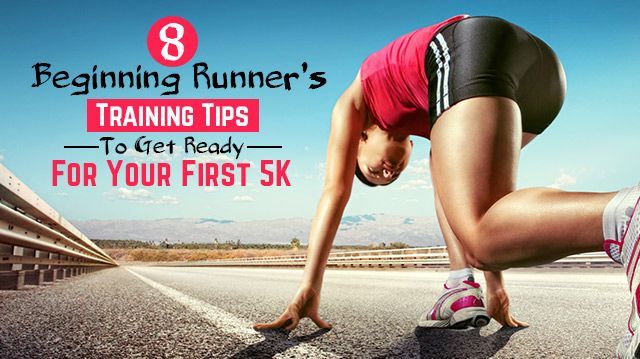
Half-marathons, marathons, and ultra-marathons seem to be all the rage these days, but let’s face it, most of us would be happy to run a mere mile comfortably. The truth is, starting to run can be very intimidating, especially (and I say this from personal experience) when you realize you can’t do it for more than 30 seconds without taking a “walk break.”
Here’s the good news: even if you are totally out of shape or have no prior running experience, you can still become a runner! Here’s the even better news: “walk breaks” are a crucial and healthy part of the process.
A great, achievable goal for beginning runners is to work up to completing your first 5K without stopping to walk. A 5K is a 5-kilometer race, or about 3.1 miles, and is the entry-level distance for long-distance runners. Races happen regularly in most areas, especially in the summer, and a quick Google search should find one coming up near you. Once you find one, here’s what you need to do to get ready for the big day!
Give yourself plenty of time to prepare
Give yourself at least eight weeks to work up to running a full 5K, and if you’re transitioning from complete couch potato to 5K champ, make it 12. It takes time for the body to adjust to exercise again, and trying to train too intensely and advance too quickly can raise your risk of an injury that could prevent you from making it to race day.
Set a training schedule — and stick to it
It’s important to create a realistic training schedule that you can stick to. A very do-able schedule is to run three days per week for 12 weeks before the day of your 5K. Set aside 45 minutes every day you plan to run — 30 minutes for walking/running and 15 minutes for a warm-up/cool-down — and try to stick to that schedule.
Start with a run/walk combo
If you’ve never run before or are returning to running after a long hiatus, expect to spend your first month or so of training alternating between running and walking. Your first week you may only be able to alternate between 30 seconds of running and one minute of walking. The next week, shoot for one minute of running and one minute of walking. Each week, aim to spend less time walking and more time running.
Don’t forget to warm up and cool down
A solid warm-up includes dynamic stretching exercises: high knees, walking lunges and butt kicks, followed by a few minutes of brisk walking before your start running. After your run, wind down with another few minutes of light walking and some static stretching. Your stretches should focus on the hamstrings, calves, hips, glutes and quads.
Incorporate two days per week of strength training
When it comes to stamina and preventing injury, strength training is just as important as building endurance. Core strength is especially important for runners, as it helps protect the lower back and encourages better posture during running. Include exercises that require you to use the weight of your body. Examples include planks, lunges, squats, push-ups, tricep dips, and supine leg lifts. Just like with your running routine, start off slow, and work your way up to multiple sets of more reps.
Take two days off per week
Many people find that they really enjoy running once they start, and feel tempted to do it every day in order to improve faster. This is a mistake! Guard your rest days as precious. Taking regular days off to rest lowers your chance of injury, which often occurs due to overexertion. Days off help to keep your energy up and your body strong.
Stretch on your days off
Light stretching or a very gentle yoga practice on your days off is a great way to stay flexible and fight muscle soreness. Areas to focus on include the calves, hamstrings, glutes and hip flexors.
Practice proper running posture
Practicing good posture doesn’t only make you a faster and more efficient runner, it also reduces your chance of injury. Posture mistakes made by both beginners and more experienced runners include the following:
Leaning forward: Your posture while running should actually be as tall and straight as possible.
Taking long steps: Taking short, quick steps leads to both a faster pace and less pressure on your joints.
Foot placement: Again, your strides should be short, and your front foot should make contact with the ground directly underneath your body, rather than in front of it.
Especially during the first few weeks of your new routine, your body will likely feel sore as it adjusts to the new demands and expectations you’re placing upon it. However, if you ever feel more than slight muscle soreness, or if your pain manifests in your joints rather than in your muscles, that’s a sign to back off and slow down.
Remember to always treat your body kindly, and good luck with your first 5K!
—Teresa Manring
Teresa is a freelance writer and yoga teacher currently living in Sri Lanka. She loves to write about policies, ideas, and practices that promote a healthy planet and create healthy people.
Sources:
http://www.active.com/running/articles/8-essential-strength-moves-for-beginning-runners?page=2
http://greatist.com/move/proper-running-form-tips
http://www.runnersworld.com/social-studies/11-tips-for-new-runners

